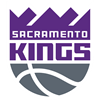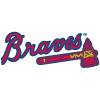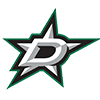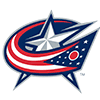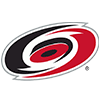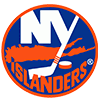While a small number of you may be already drafting again, most of the fantasy baseball world goes into hibernation during the playoffs, reemerging in November in some corners and not until February or March in others. Our coverage continues here at RotoWire, and if you're already looking for a set of rankings to aid in any of your very early drafts, James Anderson released his top-300 last week.
For my part, my rankings will be out as part of our Roundtable Rankings, released sometime in the early offseason. As part of my ranking process, I first rank players within each position, and before I can do that, I first separate each position into tiers. I've decided to share those tiers with you in a series of articles that will wrap up the state of each position at the end of 2024 and discuss how it shapes up for 2025.
Apologies to those of use who are obsessed with logic and order, and demand that all positional series start at catcher — a reasonable ask, but we're going to start at first base, because I'm more motivated to begin work on this series if I don't have to start behind the plate. Maybe we'll jump to shortstop next, just to really mess with you.
2024 First Base Review
While there were certainly sleepers to be found in this year's first base pool, the position as a whole had a down year. FanGraphs has leaguewide wRC+ by position dating back to
While a small number of you may be already drafting again, most of the fantasy baseball world goes into hibernation during the playoffs, reemerging in November in some corners and not until February or March in others. Our coverage continues here at RotoWire, and if you're already looking for a set of rankings to aid in any of your very early drafts, James Anderson released his top-300 last week.
For my part, my rankings will be out as part of our Roundtable Rankings, released sometime in the early offseason. As part of my ranking process, I first rank players within each position, and before I can do that, I first separate each position into tiers. I've decided to share those tiers with you in a series of articles that will wrap up the state of each position at the end of 2024 and discuss how it shapes up for 2025.
Apologies to those of use who are obsessed with logic and order, and demand that all positional series start at catcher — a reasonable ask, but we're going to start at first base, because I'm more motivated to begin work on this series if I don't have to start behind the plate. Maybe we'll jump to shortstop next, just to really mess with you.
2024 First Base Review
While there were certainly sleepers to be found in this year's first base pool, the position as a whole had a down year. FanGraphs has leaguewide wRC+ by position dating back to 2002, and the 107 wRC+ that first basemen produced this season was the lowest of the entire sample. A power outage was the primary problem, as the 670 homers first basemen launched this season were the lowest in a full season since 2014 (a year when power was down significantly around the league).
Some of that likely has to do with the rise in power elsewhere on the diamond. If teams can regularly churn out 20-homer middle infielders, a 25-homer first baseman just isn't that exciting, so teams may be filling their rosters with fewer of those players. As a result, first base is more frequently occupied by a player whose offensive profile looks much more like a middle infielder and who could probably spend the majority of his time as a capable enough second baseman if not for his team having better options — think Jake Cronenworth, Luis Arraez or Spencer Horwitz.
But a more significant factor appears to be that we're between generations of elite first basemen. We saw Jose Abreu (37) fall off a cliff in 2023, and Paul Goldschmidt (36) did the same in 2024, or at the very least he stepped off an uncomfortably tall ledge. Freddie Freeman (34) didn't experience a precipitous drop but wasn't the locked-in, first-round value we're used to seeing, while Bryce Harper (31), Matt Olson (30) and Pete Alonso (29) at best held serve or were slight disappointments.
The 26- to 28-year-old bracket is devoid of star first basemen. Josh Naylor, Spencer Steer, Vinnie Pasquantino, Cody Bellinger, Luis Arraez, Jake Burger, Andrew Vaughn and Ryan Mountcastle are all useful enough players, and a few of them contributed in big ways this year, but none are anywhere close to first-round consideration the way a top first baseman in his prime should be.
There's talent in the 25-and-under group, but only Vladimir Guerrero (25) really made the most of his in 2024. Hitting .323 with 30 homers, 98 runs and 103 RBI, he easily outpaced the rest of the position, staking his claim for the top spot in 2025. After him, though, nearly every exciting, young first baseman had a disappointing season. Injuries limited Triston Casas (24) to 63 games and Christian Encarnacion-Strand (24) to just 29, while Spencer Torkelson (24) and Kyle Manzardo (23) failed to deliver on their prospect pedigree. If two or three of that group take big steps forward as they head into their mid-20s, first base will be full of early-round mashers again, but if their injuries and underperformance continue, the generation gap could persist for a few more years.
Here is how every first baseman who either a) was drafted in at least half of RotoWire Online Championship drafts or b) earned at least $1 in that format (12-team mixed roto) fared in 2025, followed by a deeper dive on three notable first basemen:
| Player | Team | ADP | Value |
|---|---|---|---|
| Vladimir Guerrero Jr. | TOR | 30.9 | $32 |
| Bryce Harper | PHI | 17.1 | $23 |
| Josh Naylor | CLE | 134.0 | $23 |
| Freddie Freeman | LAD | 9.3 | $20 |
| Pete Alonso | NYM | 24.6 | $19 |
| Spencer Steer | CIN | 103.0 | $18 |
| Matt Olson | ATL | 14.7 | $17 |
| Alec Bohm | PHI | 166.6 | $14 |
| Christian Walker | ARI | 93.6 | $13 |
| Cody Bellinger | CHC | 59.9 | $13 |
| Vinnie Pasquantino | KC | 169.3 | $13 |
| Jake Burger | MIA | 148.6 | $11 |
| Paul Goldschmidt | STL | 82.3 | $10 |
| Jake Cronenworth | SD | 325.2 | $9 |
| Luis Arraez | SD | 164.5 | $8 |
| Rhys Hoskins | MIL | 188.5 | $8 |
| Carlos Santana | MIN | 360.8 | $7 |
| Luke Raley | SEA | 341.3 | $7 |
| Michael Busch | CHC | 339.1 | $7 |
| Isaac Paredes | CHC | 191.9 | $6 |
| Nathaniel Lowe | TEX | 279.4 | $6 |
| Michael Toglia | COL | undrafted | $5 |
| Josh Bell | ARI | 322.0 | $5 |
| Yandy Diaz | TB | 133.6 | $4 |
| Andrew Vaughn | CWS | 248.4 | $4 |
| Ryan O'Hearn | BAL | 359.2 | $3 |
| Ryan Mountcastle | BAL | 253.8 | $3 |
| Nolan Schanuel | LAA | 355.2 | $3 |
| Jeimer Candelario | CIN | 208.4 | -$1 |
| Justin Turner | SEA | 250.3 | -$1 |
| Ty France | CIN | 345.6 | -$6 |
| Spencer Torkelson | DET | 119.8 | -$10 |
| Triston Casas | BOS | 89.3 | -$11 |
| Anthony Rizzo | NYY | 250.6 | -$12 |
| Alex Kirilloff | MIN | 343.1 | -$19 |
| Christian Encarnacion-Strand | CIN | 132.7 | -$22 |
| Brandon Drury | LAA | 225.6 | -$23 |
| Jose Abreu | FA | 304.1 | -$26 |
Biggest Riser: Josh Naylor
Naylor was the 14th first baseman off the board in the RotoWire Online Championship, a hair behind Yandy Diaz, another hit-over-power first baseman. But while Diaz took steps backward across the board in his age-33 season, Naylor reached a new level in his age-27 campaign, finishing as a top-three first baseman.
At a surface level, it looks like Naylor swapped contact for power and became a completely different player, with his average plummeting from .308 to .243 while his homer total jumped from 17 to 31. A big drop in BABIP (from .326 to .246) accounts for a fair portion of his batting-average drop, however, as his strikeout rate rose less than three points to 16.6 percent, it's still a very good number. He also didn't meaningfully change his quality of contact, raising his barrel rate by 0.2 points while losing a 10th of a percent in hard-hit rate.
The biggest boost for Naylor this season was instead to his playing time. Staying healthy and being allowed to consistently start against lefties allowed him to accumulate 633 plate appearances, smashing his previous career high of 498. The high workload in a young, improving offense should be there again in 2025, which should make Naylor a solid choice as your starting first baseman, even if it's hard to predict where exactly the balance between contact and power will fall in 2025.
Biggest Faller: Spencer Torkelson
If you told me heading into the season that the Tigers would wind up riding a wave of youth to the playoffs, I would have been almost certain that Torkelson was a key part of their success. But while he was indeed part of their late-season charge, slashing .248/.338/.444 (good for a 125 wRC+) across 151 plate appearances after returning to the majors in mid-August, his season was far from a successful one. He spent nearly half the campaign in the minors, getting sent down at the start of June after slashing .201/.266/.330 (71 wRC+) in 230 trips to the plate.
Torkelson is still just 25, and it wasn't too long ago that he was the first overall pick in the 2020 draft, so it might be tempting to zoom in on his last six-plus weeks and declared him fixed. I would caution against viewing him as a major sleeper heading into 2025, however, as that late-season stretch was buoyed by a .346 BABIP. Take that away, and you're left with a player who struck out 32.5 percent of the time while producing an above-average, but rather unremarkable, 40.5 percent hard-hit rate.
A better surrounding lineup should boost Torkelson's counting stats next season, but it's not even guaranteed that he'll hold down an everyday spot in that lineup. Even with him having 1,469 career major-league at-bats to his name, a bet on Torkelson remains a significant risk.
Biggest Unanswered Question: What would a full season of Triston Casas look like?
Fans had seen enough over Casas' first two partial seasons — .253/.365/.477 with 29 homers, 77 runs and 77 RBI in 159 games — to make him a top-100 pick in his age-24 season, and he came out of the gates looking pretty much the same, slashing .244/.344/.513 through April 20. Unfortunately, he tore his rib cartilage that day against the Pirates, an injury that kept him out until mid-August.
He remained effective once he finally returned, slashing .239/.333/.433 with seven homers in 153 trips to the plate, giving him a final line that looked quite similar to his previous performances, albeit over a mere 63 games. Considering that he also missed time in 2023, with frequent off days against lefties as well as a late-season shoulder injury limiting him to 502 plate appearances, that means we've still yet to see Casas fully unleashed as an everyday player over a full season.
With good health and his manager's trust against southpaws, Casas could reach a new level in his age-25 campaign next year, but neither can be counted on. He sat against lefties in September and struck out against them 34.4 percent of the time last year, though it's the health that's a bigger question. His rib injury was apparently just from swinging hard rather than a contact injury, and he's not exactly going to stop swinging hard. Even if he does, the late-season shoulder issue in 2023 as well ankle and knee issues in 2022 don't paint the picture of a durable player.
2025 First Base Top 30 Rankings
Below, I've presented my top-30 first base rankings, split up into seven tiers. Ranks within each tier are tenuous, especially for this first installment in the series given that it's still mid-October, and I expect to make multiple changes before our initial Roundtable Rankings are released. It's possible some players move between tiers, but I consider those to be much more fixed.
These tables show several key metrics I look at when building my rankings. K%, Barrel% and xwOBA are important to understand the shape (and extent) of a player's value at the plate and help you evaluate a player without being swayed by his past batted-ball luck or the performance of his teammates (who deserve much of the credit for his runs and RBI). SB/600 PA is something I look at rather than raw stolen bases in order to compare players on the same scale (though be careful when using it to evaluate the Dairon Blancos of the world). I've also included a column called "Risks," where I've made a note if a player is particularly injury-prone, old, unlikely to earn full-time at-bats or simply lacks a long track record.
Tier 1: Team Cornerstones
| Rank | Player | Team | Age | K% | Barrel% | xwOBA | SB/600 | Risks |
|---|---|---|---|---|---|---|---|---|
| 1 | Vladimir Guerrero | TOR | 26 | 13.8% | 13.7% | .410 | 1.7 | |
| 2 | Bryce Harper | PHI | 32 | 21.9% | 10.4% | .361 | 6.7 | health, age? |
| 3 | Freddie Freeman | LAD | 35 | 15.7% | 9.1% | .370 | 8.5 | age, hobbled in playoffs |
Note: Age is for 2025; K%, Barrel%, xwOBA and SB/600 are from 2024.
These three first basemen all deserve consideration in the first round of 15-team mixed leagues, though I suspect Harper and Freeman will spend most of their time in the second. I'd like a bit more year-to-year consistency from Vlad Jr. but view that as less of a risk than Freeman's age or Harper's durability concerns. We could be entering "better to be out a year early than a year late" territory with Freeman in particular, and he now comes with added question marks after playing through an ankle injury in the playoffs. Perhaps he'll move ahead of Harper in March if he's back to looking like himself in spring games.
Tier 2: Major Power, Minor Question Marks
| Rank | Player | Team | Age | K% | Barrel% | xwOBA | SB/600 | Risks |
|---|---|---|---|---|---|---|---|---|
| 4 | Pete Alonso | FA | 30 | 24.7% | 13.0% | .345 | 2.6 | new home? |
| 5 | Matt Olson | ATL | 31 | 24.8% | 12.4% | .342 | 0.0 | age? |
These two NL East sluggers both slightly underperformed their draft-day prices, but both were still major contributors, particularly in the power categories. They aren't quite as reliable nor as likely to help out in batting average as the members of Tier 1, but you should still be quite happy with the results if you end up grabbing your starting first baseman in this tier. Do be wary of the fact that another step backward is perhaps more likely than a rebound, given where they are in their careers, however, and pay close attention to where Alonso signs. If he leaves Queens for a more hitter-friendly park, that could boost his value, but it could also be offset by the additional pressure that tends to follow star players in their first year of a big contract with a new team.
Tier 3: Good All-Arounders in Peak Years
| Rank | Player | Team | Age | K% | Barrel% | xwOBA | SB/600 | Risks |
|---|---|---|---|---|---|---|---|---|
| 6 | Spencer Steer | CIN | 27 | 20.9% | 6.4% | .317 | 22.9 | |
| 7 | Josh Naylor | CLE | 28 | 16.6% | 8.4% | .334 | 5.7 | |
| 8 | Vinnie Pasquantino | KCR | 27 | 12.8% | 7.1% | .331 | 1.1 |
These three hitters are already quite capable, and if all they did going forward was recreate their 2024 numbers, that would be perfectly acceptable. At this stage of their careers, it's still possible to dream of a small step forward, and none of these three have big red flags that hint at the possibility of a huge step back. None of the three produce huge barrel rates, but they make up for it by putting tons of balls in play, in the case of Naylor and Pasquantino, or by playing in a great park and adding value on the basepaths in Steer's case. (Steer is an outlier in terms of how much speed he offers at the position, so move him down multiple tiers if you're playing in a points format where stolen bases aren't particularly valuable.)
Tier 4: Big Power, Pretty Big Question Marks
| Rank | Player | Team | Age | K% | Barrel% | xwOBA | SB/600 | Risks |
|---|---|---|---|---|---|---|---|---|
| 9 | Triston Casas | BOS | 25 | 31.7% | 13.3% | .330 | 0.0 | health |
| 10 | Christian Walker | FA | 34 | 24.1% | 13.3% | .354 | 2.2 | age, health, new home? |
| 11 | Jake Burger | MIA | 29 | 25.9% | 12.3% | .337 | 1.0 | health, inconsistency |
| 12 | Michael Toglia | COL | 26 | 32.1% | 17.2% | .365 | 13.1 | short track record |
This quartet can definitely hit the ball over the fence, but all four come with question marks that make me hesitant to move them higher up the list. Casas is the member of this group who has the best chance to finish far ahead of this ranking, but he has strikeout problems, issues with lefties and growing durability concerns. He'll need all three to go away to truly make good on his potential. Walker arguably belongs right next to Alonso and Olson in Tier 2 based on his recent numbers, but even without considering his durability concerns, a step back of some size in his age-34 season is likely, especially if he moves to a more difficult home park. Burger remains hard to fully trust between his inconsistency and his past injury woes, while Toglia is someone with whom I really don't know what to do. This ranking feels aggressive for a player with a career 78 wRC+, but he had the highest barrel rate and the third-highest xwOBA among first basemen last year and gets to play half his games at Coors Field.
Tier 5: Competent Regulars With Disappointing Power
| Rank | Player | Team | Age | K% | Barrel% | xwOBA | SB/600 | Risks |
|---|---|---|---|---|---|---|---|---|
| 13 | Cody Bellinger | CHC | 29 | 15.6% | 6.3% | .305 | 9.5 | health |
| 14 | Yandy Diaz | TBR | 33 | 15.3% | 7.6% | .337 | 0.0 | age |
| 15 | Luis Arraez | SDP | 28 | 4.3% | 1.6% | .326 | 8.0 | |
| 16 | Jake Cronenworth | SDP | 31 | 18.0% | 7.7% | .338 | 4.6 | age? |
| 17 | Paul Goldschmidt | FA | 37 | 26.5% | 10.6% | .333 | 10.1 | age, down year, new home? |
| 18 | Andrew Vaughn | CHW | 27 | 21.3% | 9.3% | .321 | 1.9 |
These six first basemen all come with locked-in everyday playing time, and they're all perfectly capable hitters. None is likely to produce the power you want from your first baseman, however, and none (other than Arraez, whose power is truly bottom of the scale) are likely to make up for it with an elite batting average. This is the sort of player whose value goes up in very deep leagues, where playing time is crucial, but who you'd rather avoid in shallower leagues. The player with the widest range of outcomes here is probably Goldschmidt, who won an MVP as recently as 2022 but who looked very much like a 36-year-old last season and may have to adjust to new surroundings next year. You could make a case that Bellinger has an even wider array of possibilities in front of him, but his 2019 MVP season was a long time ago at this point, so it's best to view him a boring but capable regular who will pitch in across the board but won't move the needle in any category.
Tier 6: Young (or Young-ish) with Potential (or Potential-ish)
| Rank | Player | Team | Age | K% | Barrel% | xwOBA | SB/600 | Risks |
|---|---|---|---|---|---|---|---|---|
| 19 | Tyler Soderstrom | OAK | 23 | 24.9% | 14.6% | .348 | 0.0 | short track record |
| 20 | Christian Encarnacion-Strand | CIN | 25 | 28.5% | 8.4% | .306 | 0.0 | health, hasn't shown it yet |
| 21 | Spencer Horwitz | TOR | 27 | 18.4% | 8.0% | .337 | 0.0 | short track record, platoon? |
| 22 | Spencer Torkelson | DET | 25 | 27.6% | 6.7% | .284 | 0.0 | hasn't shown it yet |
| 23 | Michael Busch | CHC | 27 | 28.6% | 11.2% | .321 | 2.1 | short track record, platoon? |
| 24 | Nolan Schanuel | LAA | 23 | 17.0% | 3.5% | .322 | 9.9 | short track record |
If these players had more obvious star ceilings, they'd be up in Tier 4 with Triston Casas. If they'd been here a bit longer and had the chance to carve out locked-in everyday roles, they'd be hanging out with Andrew Vaughn at the back of Tier 5. As it stands, they have neither. I would expect one or two of these players to turn out to be good sleeper picks, but all of them have plenty of reasons to bet against them. Strikeout concerns are present with all of them except Horwitz and Schanuel, and if you wind up with one of those two at first base, you're probably writing off even 20 homers as a possibility. Perhaps Soderstrom does what he did last year in 61 games over a full season in a more hitter-friendly park in Sacramento, or perhaps Encarnacion-Strand's 2024 campaign proves to be an entirely injury-related aberration and he takes off as the everyday first baseman in the third-best hitters' park in the league. Maybe this is finally Torkelson's year, or maybe Busch is trusted with an everyday job and becomes something more than an above-average bat. You can talk yourself into most of these guys, but each of them is far enough from a sure thing that waiting until now to address the position could lead to some problems.
Tier 7: Worst Remaining Regulars and Best Remaining Platoon Bats
| Rank | Player | Team | Age | K% | Barrel% | xwOBA | SB/600 | Risks |
|---|---|---|---|---|---|---|---|---|
| 25 | Ryan O'Hearn | BAL | 31 | 14.0% | 6.9% | .352 | 3.6 | platoon, age? |
| 26 | Luke Raley | SEA | 30 | 29.7% | 11.0% | .320 | 14.5 | platoon |
| 27 | Ryan Mountcastle | BAL | 28 | 22.5% | 8.8% | .335 | 3.6 | health, crowded roster |
| 28 | Rhys Hoskins | MIL | 32 | 28.8% | 12.7% | .305 | 3.5 | age? |
| 29 | Nathaniel Lowe | TEX | 29 | 22.1% | 5.8% | .329 | 2.1 | |
| 30 | Josh Bell | FA | 32 | 19.9% | 7.5% | .315 | 0.0 | unknown team, age? |
There's not a lot here. O'Hearn's strikeout rate and xwOBA pop out in this group, but he's never going to earn more than a platoon role on a crowded Orioles roster — and being protected from facing lefties contributes to his numbers looking so strong in the first place. Similarly, Raley offers one of the best power-speed combos at the position and is someone I'd like in a Draft Champions League, where I can use him against a run of righties and have enough options that I can afford to sit him during series where he'll be stuck on the bench, but he doesn't play often enough to be reliable in shallow formats. That aforementioned crowd in Baltimore also prevents Mountcastle from having a true everyday role, which would likely put him in Tier 5 above Vaughn. You could make the case for Hoskins, Lowe or Bell in Tier 5 as well, assuming the latter lands somewhere where he's in a starting role, but their bats are uninspiring enough that I'd rather take a chance on the upside of someone from Tier 6 instead in most situations.









